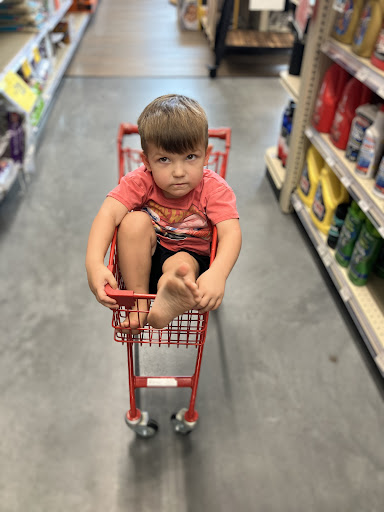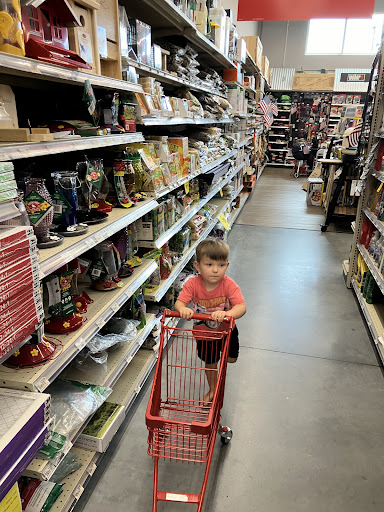Color matching app for paint: Easy & Accurate 2025
Why Paint Color Matching Apps Are Revolutionizing Home Projects
A color matching app for paint can instantly identify colors from photos or real-world objects and match them to thousands of paint options. Using your phone’s camera or a dedicated color reader, these apps provide precise paint matches and often include augmented reality (AR) tools to visualize colors in your space.
Choosing the perfect paint color has always been a challenge. Inspiration is everywhere—a sunset, a piece of art, a throw pillow—but turning that shade into actual paint often involved guesswork and multiple sample pots.
Paint color matching apps have changed everything. These digital tools remove the uncertainty by letting you capture any color with your smartphone and see matching paint options instantly. Whether you’re touching up existing paint or starting a complete room makeover, these apps offer a convenient and accurate starting point.
Many top paint brands, like Benjamin Moore, offer their own highly-rated apps with features like virtual fan decks and AR visualization. The technology ranges from simple camera-based matching to sophisticated systems that work with dedicated color readers for over 90% accuracy. Some apps focus on specific paint brands available at stores like Lowcountry Ace, while others work across multiple manufacturers.
The helpful team at Lowcountry Ace knows that while these apps are powerful, they work best when combined with expert advice and physical samples for final decisions. They can streamline the selection process and help reduce costly color mistakes.
Color matching app for paint terms you need:
How Do Paint Color Matching Apps Work?
Ever wonder how a color matching app for paint can look at your favorite throw pillow and instantly suggest a perfect paint shade like Benjamin Moore’s “Calm”? The technology is fascinating.
When you point your phone at a surface, the app analyzes the image’s pixels, breaking them down into red, green, and blue values. These values are then compared against a massive database of paint colors to find the closest match. While phone camera technology is advanced, it faces challenges. Lighting conditions, from bright sun to indoor fluorescence, and surface sheen can alter how a color is captured. The quality of your phone’s camera sensor also plays a significant role.
To compensate, apps use advanced image processing algorithms to account for lighting and texture variations. While impressive, this technology isn’t perfect, which is why some situations benefit from more specialized tools. Dedicated color reader devices offer superior accuracy by using their own controlled light source and spectrophotometers to measure how light reflects off a surface, eliminating environmental variables for a scientific-grade reading.
Several factors influencing precision are always at play. Ambient lighting is the biggest variable—a color can look different in morning light versus evening lamplight. Surface texture and your phone’s camera quality and screen calibration also affect the final result. The helpful team at Lowcountry Ace recommends using apps as a starting point. For more details on finding the perfect shade, explore our house paint color matching services.
The Science of Color Matching on Your Phone
Behind every color matching app for paint is color science. Your phone translates colors into mathematical values for comparison. Most apps use the sRGB color space, a standard for defining digital colors. When you scan a color, the app converts it into HSV values: Hue (the pure color), Saturation (vibrancy), and Value (lightness or darkness).
Light Reflectance Value (LRV) is another key metric, measuring how much light a color reflects. High LRV colors make a space feel larger and brighter, while low LRV colors create a cozier feel. The app’s algorithms analyze light wavelengths bouncing off a surface to find paint colors with a matching digital signature. For greater accuracy, using a white balance reference point, like a white card, helps the app calibrate for ambient light, significantly improving results without expensive equipment.
Phone Camera vs. Dedicated Color Readers
When choosing a color matching app for paint, you’ll find two main types: those using your phone’s camera and those pairing with specialized hardware.
Phone cameras offer best accessibility and are great for capturing inspiration on the go. They are ideal for getting a general sense of color families. The main drawback is variable accuracy due to lighting, textures, and camera quality. They are best for narrowing down choices, not for critical color matching.
Dedicated hardware provides high accuracy (often over 90%) by controlling its own light source. These devices deliver professional results and typically use Bluetooth connectivity to sync with an app. The primary downside is the additional cost, though the precision often justifies the expense for professionals or serious DIYers.
These pocket-sized spectrophotometers shine a controlled light onto a surface and analyze the reflection. By eliminating environmental variables, they provide precise data to the companion app, which then finds the closest paint matches. The helpful team at Lowcountry Ace can help you decide which approach is best for your project.
Key Features to Look For in a Color Matching App for Paint
Not all color matching apps for paint are the same. Some offer basic color identification, while others provide a suite of tools for visualization and project planning. Knowing which features matter for your project will help you choose the right app.
Real-World Color Capture and Matching
The core function of a color matching app for paint is capturing real-world colors. The best apps allow matching from photos in your gallery or by taking new ones. Simply tap an area of the photo to identify its color. Live color scanning uses your phone’s camera in real-time to instantly display matching paint colors as you point it at different surfaces.
Good apps also suggest lighter and darker shades and complementary colors to help you build a cohesive palette. Some apps work with a single brand, while others offer matching across multiple paint brands for greater flexibility.
Virtual Room Visualizers
Virtual visualizers let you try on colors before you commit. Photo visualizers allow you to upload a picture of your room and digitally apply different paint colors to the walls. This gives you a good idea of how a shade will look with your lighting and furniture.
Augmented Reality (AR) visualization is even more dynamic. Point your phone’s camera at a wall, and the app applies paint colors in real-time on your screen. You can walk around the room to see how the color appears from different angles. The helpful team at Lowcountry Ace suggests using AR features alongside physical samples to narrow down your options. For more on how finishes affect the look, check our guide to paint finishes.
Extra Tools and Functionalities
The most useful apps include practical features to streamline your project.
- Paint calculators estimate how much paint you’ll need based on room dimensions, saving you from extra store trips.
- Sheen identification, available with some specialized devices, can identify a paint’s finish (flat, eggshell, etc.), which is crucial for touch-ups.
- Saving and sharing color palettes makes it easy to collaborate with family or contractors.
- Direct sample ordering lets you get physical color chips or peel-and-stick samples delivered.
- In-app store locators help you find the nearest retailer, like your local Lowcountry Ace Hardware, for supplies and expert advice.
A Comparison of Paint Matching App Types
When choosing a color matching app for paint, you’ll find two main types: apps from specific paint companies and independent apps that work across multiple brands. Each approach has its own advantages.
| Feature | Paint Brand-Connected Apps (e.g., Benjamin Moore Color Portfolio) | General Paint Matching Apps |
|---|---|---|
| Supported Paint Collections | Exclusively their own brand’s colors (e.g., Benjamin Moore’s 3,500+ colors) | Multiple major paint vendors |
| Best For | Customers loyal to a specific brand; visualizing that brand’s colors; ordering samples directly | Matching an unknown color to find equivalents across brands; exploring a broad range of options |
| Hardware Integration | Often integrate seamlessly with proprietary color reader devices for high accuracy | Typically rely on a smartphone camera; some may work with third-party color readers |
| AR Features | Highly developed virtual visualizers (photo, video/AR) custom to their color palettes | May have basic visualizers, with less emphasis on AR; focus is on color identification |
| Cost | App is usually free; dedicated hardware is an additional purchase | App may be free or have a one-time purchase fee |
The choice often depends on whether you’re committed to a paint brand or want the freedom to explore options from multiple manufacturers.
Paint Brand-Connected Apps: A Seamless Experience
Paint manufacturers have invested in creating apps that showcase their color collections. These apps function like a digital paint store in your pocket.
The seamless integration with available products is their biggest strength. When you browse colors in an app like Benjamin Moore’s Color Portfolio, you know every shade is available at your local paint retailer. The high-quality AR visualization tools are calibrated for their specific paint formulations, providing a more realistic preview. These apps also offer access to curated color collections and often allow you to order samples directly.
The main limitation is that these apps are focused on select paint lines. If you’re flexible about the brand, you won’t see what other manufacturers offer. But if you already know you want Benjamin Moore paint—which we carry at Lowcountry Ace—these apps provide a rich experience. You can learn more about Where To Buy Paint at Lowcountry Ace.
General Paint Matching Apps: Flexibility Across Paint Collections
Independent apps act as a color detective across multiple paint manufacturers. These apps support a wide range of color options from various major brands.
This flexibility makes them ideal for matching a color regardless of its origin. If you find the perfect shade on a vintage item, these apps can find equivalent colors from different paint brands, letting you choose based on price or availability. They are an excellent starting point for your color journey.
The trade-off is that these apps may lack advanced AR features or direct sample ordering. Their focus is on identification rather than a full-service visualization experience. However, they excel at providing options and are a valuable tool for any painter’s toolkit.
Both app types serve important roles. The helpful team at Lowcountry Ace can help you decide which approach best suits your project.
Maximizing Accuracy and Navigating Challenges
Getting great results from a color matching app for paint requires understanding how to use it effectively. A few simple techniques can dramatically improve accuracy and help you avoid common pitfalls.
Tips for Getting the Most Accurate Match
To get reliable results, control the scanning environment as much as possible.
- Use natural, indirect light. The soft, even light near a window on a cloudy day is ideal. Avoid harsh direct sunlight, which washes out colors, and dim artificial light, which can distort them.
- Avoid shadows and glare. Position yourself so your shadow doesn’t fall on the target area, and avoid reflections from glossy surfaces.
- Scan a clean, flat, solid-colored surface. Textured surfaces or dirty paint chips can lead to inaccurate readings.
- Use a white reference card for calibration if the app supports it. This helps the app adjust for ambient lighting conditions, much like a professional camera’s white balance.
- Understand your phone screen’s limitations. The color on your screen is a helpful guide, but it won’t be an exact match for the final painted wall because screens emit light while paint reflects it. Always confirm with a physical sample.
Common User Challenges for a color matching app for paint
Even with good technique, you may encounter technical issues. Common problems include connectivity issues with Bluetooth devices, inaccurate color rendering in visualizers, and general app crashes or bugs.
Most of these issues have simple solutions:
- Keep your app and phone’s operating system updated. Developers regularly release fixes for bugs.
- Check app permissions. Ensure the app has access to your camera and Bluetooth.
- Restart your devices. Turning your phone and any connected hardware off and on can resolve many glitches.
The helpful team at Lowcountry Ace understands these digital tools are just one part of the process. We’re here to help you steer any challenges and find the perfect color. For more on data privacy, you can learn more about how developers declare data sharing.
Frequently Asked Questions about Paint Matching Apps
We often hear similar questions from customers about using a color matching app for paint. Here are some of the most common ones.
How accurate are paint color matching apps?
Accuracy depends on the technology. Phone camera apps are great for inspiration but can be a few shades off due to variables like lighting and camera quality. They are best used as a starting point. For high precision, apps paired with dedicated color reader devices are the gold standard, offering over 90% accuracy. They use their own controlled light source, making them ideal for projects requiring an exact match.
Do I need to buy a special device to use these apps?
No, not for basic use. Most apps work well with just your phone’s camera for capturing color ideas and visualizing them. However, for professional-grade accuracy and features like sheen detection, a separate color reader is highly recommended. The investment is often worthwhile for touch-ups or large projects where precision is key.
Can an app match a color from a different paint collection?
Yes, depending on the app. General paint matching apps are designed to be brand-flexible, searching across multiple manufacturers to find equivalent colors. This gives you more options. Brand-specific apps will only match colors to their own paint library, which is perfect if you’re already committed to a particular brand. The helpful team at Lowcountry Ace can help you find the right approach for your project.
Conclusion
A color matching app for paint is a game-changer for any modern paint project. These digital tools make it easy to find, explore, and select colors by connecting real-world inspiration to thousands of paint options. You can explore palettes, visualize colors on your walls with AR, and even estimate paint quantities from your phone.
However, digital color matching has its limits. What you see on a screen isn’t always what you get on a wall, because screens emit light while paint reflects it. This is why physical samples remain essential for perfect results. A paint chip shows you exactly how a color will look in your home’s unique lighting throughout the day.
The best approach is to use apps to narrow your choices and then confirm with real samples. Apps are fantastic for inspiration and initial visualization, but they work best when paired with expert guidance.
That’s where the helpful team at Lowcountry Ace comes in. Our state-of-the-art color matching technology can create precise matches, and our experienced staff can guide you to the perfect shade. Whether you start with an app or need professional color matching, we’re here to bridge the gap between digital convenience and real-world perfection. Visit us for professional paint matching service at our James Island, Folly Beach, or Charleston locations to turn your vision into reality.
Lowcountry Ace Hardware: Your one-stop shop for home improvement. We offer quality products from trusted brands and expert advice from our experienced staff. Located on James Island, visit us for tools, hardware, fishing gear, power tools, building materials, grills & smokers, electrical and plumbing supplies, and more.

















